- Jun 27, 2022
Weighted Crappie Rigs You Didn’t Know You Could Use for Crappie
Learn about different crappie rigs that allow you to present soft-plastic crappie baits more effectively for a broad range of situations.
In my opinion, the most classic of all crappie rigs – a soft-plastic crappie bait rigged on a small jighead – is the most fish-catching tool on the planet. Think about it. The combo is so little that fish of all sizes, from tiny to giant, can and do eat it. We all have stories about catching – or at least hooking into – monsters of some kind on a crappie bait.
The crappie jig looks like food, most often imitating a prey fish or insect. Today’s technology allows for precision-made, multi-cavity aluminum molds that feature intricate design shapes and features. The result is a realistic forage match that appeals to most gamefish. Sometimes subtlety tempts the most. The perfect example is the teasing action of the flexible, straight tail on a Bobby Garland Baby Shad. Conversely, a bait with a crazy amount of tail action, like the heavy-thumping Bobby Garland Stroll’R, might drive attention.
A crappie jighead is the standard business partner for a host of soft-plastic crappie baits. However, at times, other crappie rigs, including some you might not consider, provide the best means for presenting these baits. Let’s look at ways that non-traditional weighting approaches can boost your crappie catching success.
Double Jig Rig
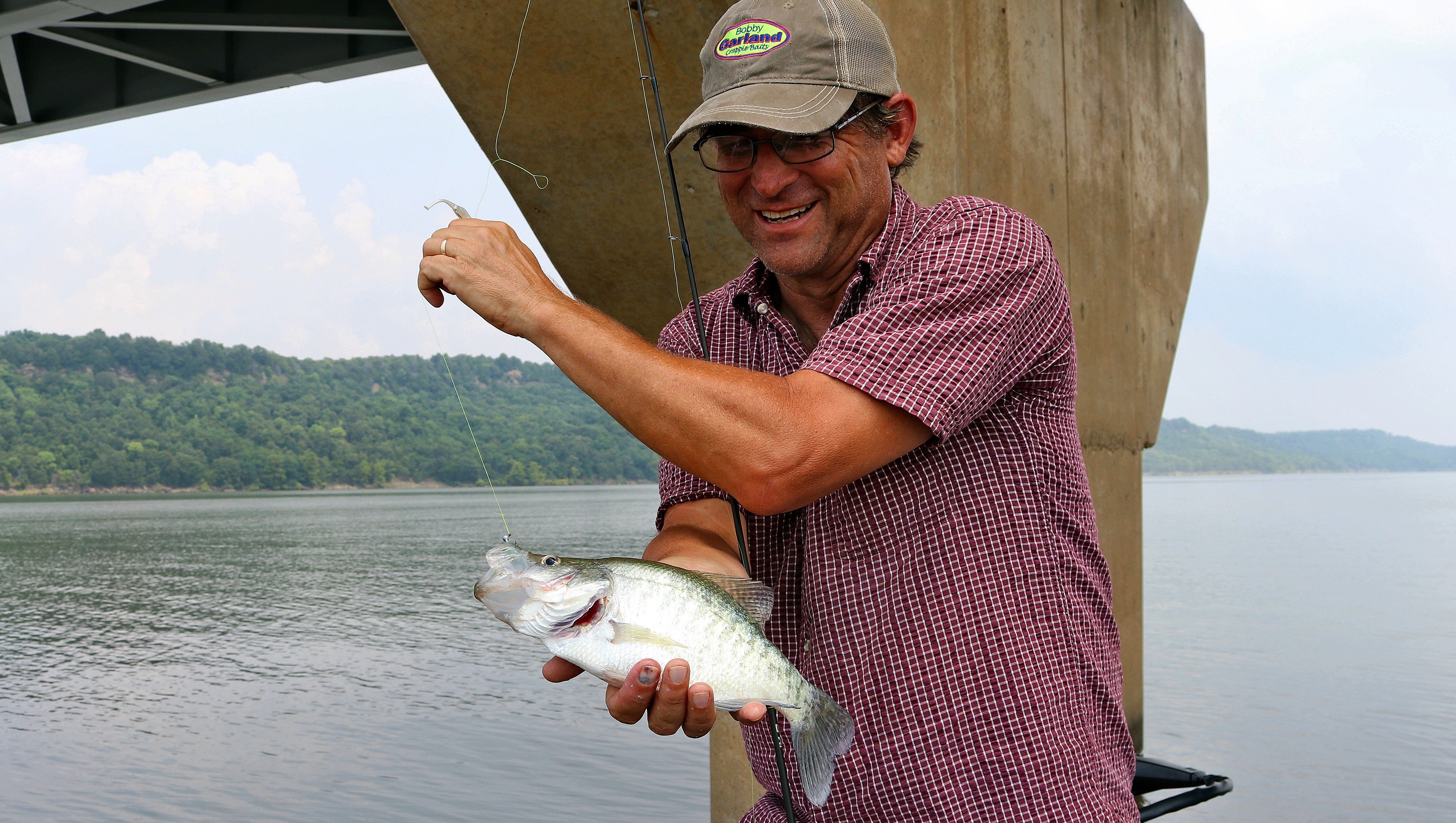

Tying two crappie jigs 15 to 18 inches apart on the same line is nothing new. This crappie rig works great for presenting two different lure styles and/or colors at the same time, expediting the patterning process. It also allows for better jig control in wind or for fishing deep. For example, if conditions warrant a 1/16-ounce weight, tie on two 1/32-ounce jigheads for an equivalent presentation of two baits.
Lure designer George Toalson breaks tradition of using same-sized double jigs. He puts a lighter jig on the bottom.
“From years of demonstrating lures in display tanks, I began noticing a lighter jighead on the bottom was getting more attention from fish. So, I intentionally started rigging it that way in real crappie fishing situations, and I’d say today that 90 percent of my catches come on the smaller, bottom bait. Use a loop knot to attach them, and give it a try,” Toalson said.
Drop Shotting
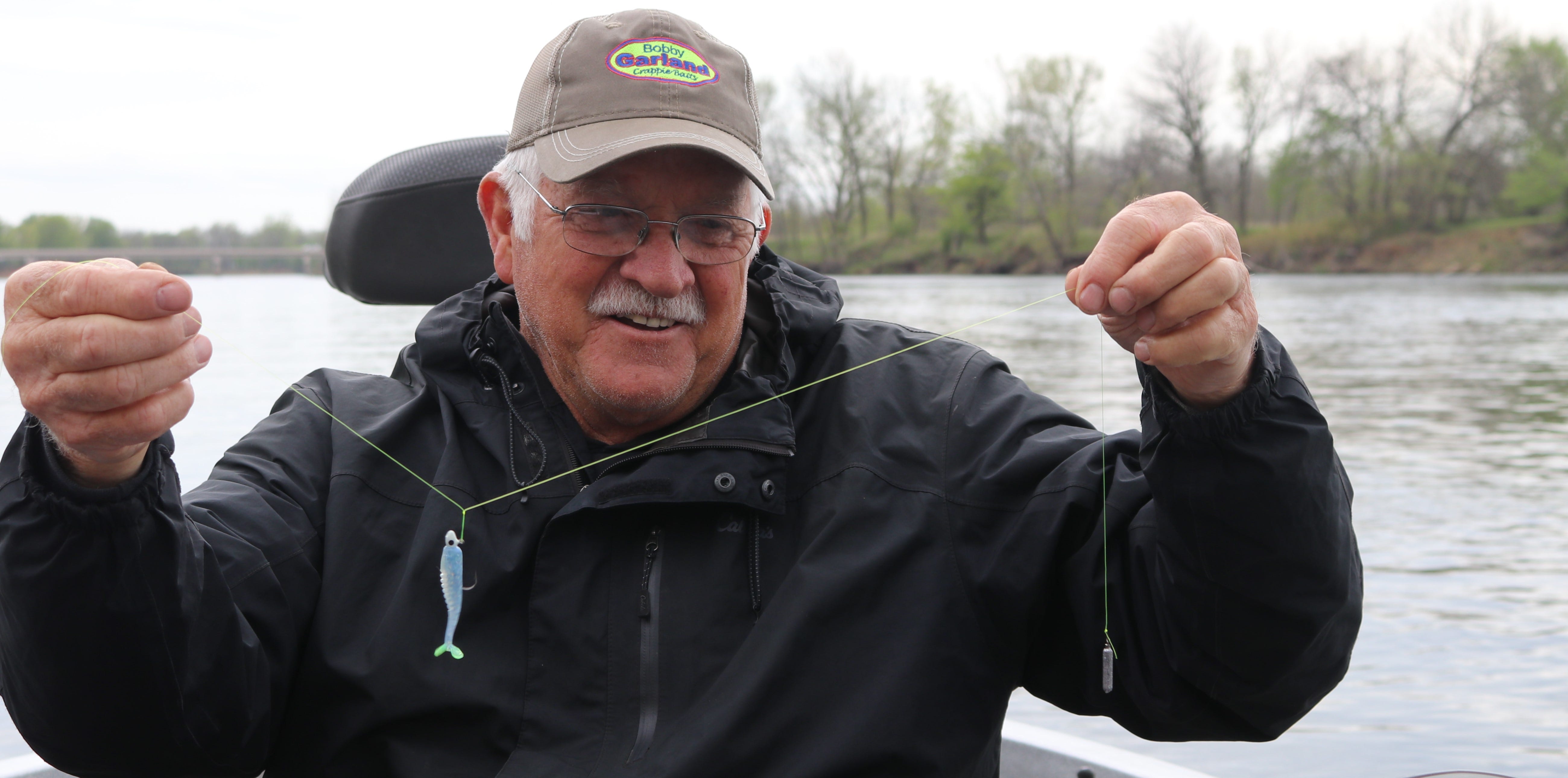

Okay, let’s borrow one from the bass anglers here by using drop-shot rig for crappie. For this, the weight is at the end of the line, with a single lure – possibly two – affixed above, presenting the baits subtly in an important zone.
In truth, crappie anglers were doing a form of this long before it became a popular bass technique. Remember the packaged “Crappie Rigs” of decades ago that featured a length of line with two protruding perpendicular wires to hang your hooks and minnow from, and a swivel for a weight at the bottom?
Same principle, but in drop shotting, the angler is applying action to an artificial lure. This is a great rig for fishing deep spots. The angler gives life to the crappie bait action by shaking or twitching the rod tip. It can also effectively be dragged along the bottom.
Toalson likes this rig for fishing eddies in river current.
“I’ll cast a drop shot to the side of an eddy so that the current helps carry it to the sweet spot where the crappie congregate. Once there, the weight will keep it on the bottom, or be slowly moving it along, and I’ll lightly twitch my rod top to make the baits dance. I grew up catching crappie this way with my dad and it remains one of my favorite ways to fish.”
Split Shotting
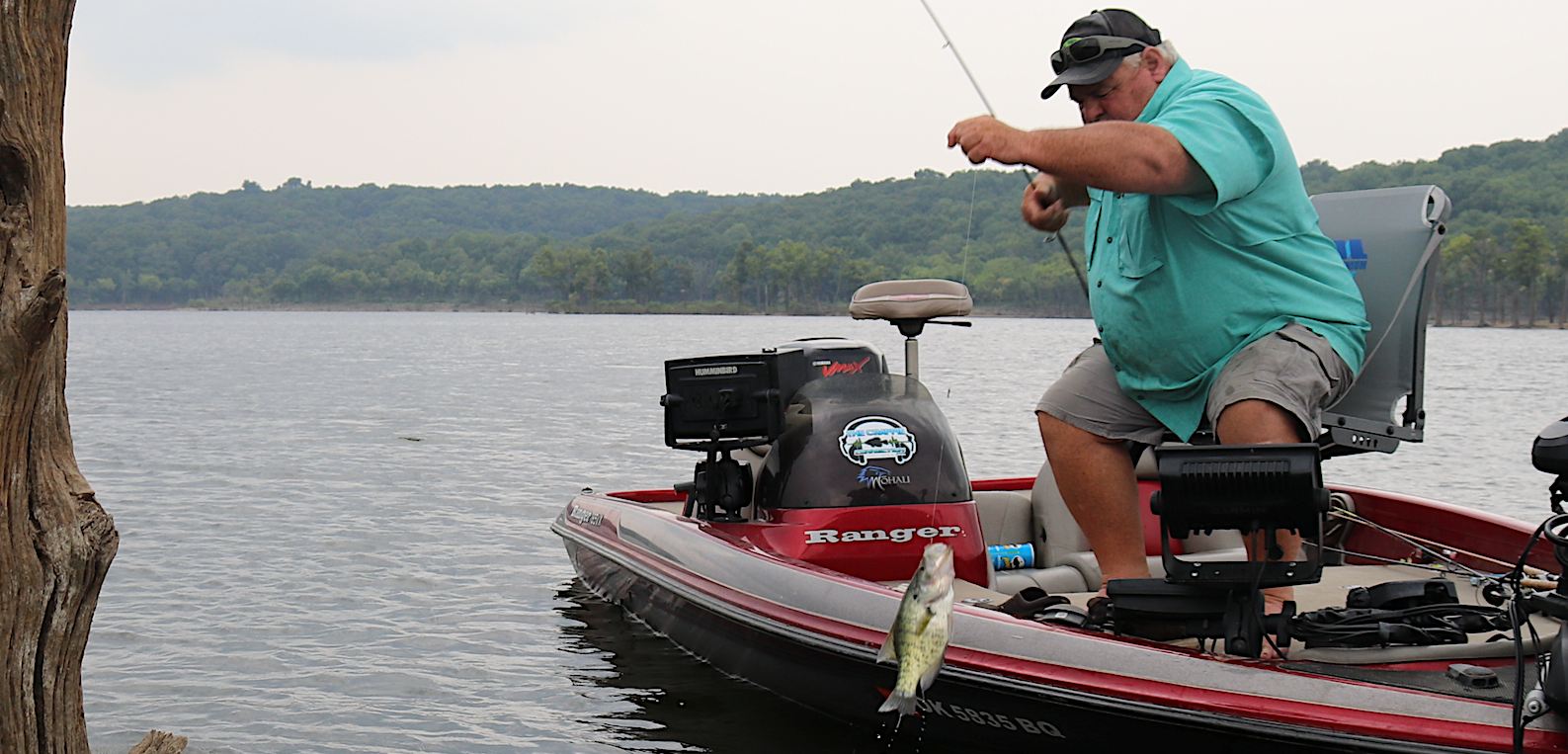

The little crimp-on weights, again most commonly lead but also available in some alternative materials, are usually round and come in varying sizes.
Oklahoma’s Gary Rowe says, for him, the use of split shots is much more than just additional weight.
Rowe lives alongside Fort Gibson Lake near Wagoner, Okla., so he spends most of his time there, but also frequents Lake Eufaula and Grand Lake.
“Ever since Bobby Garland came out with its Itty Bit baits a few years ago, I’ve been fishing them more and more. So, today, I’d say I’m finesse crappie fishing at least 85-percent of the time. No reason to wait for tough bite to downsize when I know I can always catch them on Itty Bits,” Rowe explained.
Rowe uses mostly the Itty Bit Slab Slay’R and Itty Bit Slab Hunt’R, rigged on a Bobby Garland 1/48-ounce Itty Bits Jighead, fished on 6-pound test. He attaches a Bass Pro XPS Clam Shot weight, #4 or #6, 12 to 16 inches above his bait. Then he pitches or casts the rig, allowing it to pendulum fall to the cover he’s fishing.
“I pretty much use the same rig whether I’m fishing a log on the bottom in 4 feet of water, or a brush pile in 25 feet. The clam weight helps sink the bait faster, but more importantly it gives me better control of the lure and presentation.
Rowe also is quick to point out that his finesse rig isn’t just about catching numbers, but also quality.
“Of my six 2-pounders from Gibson this year, which isn’t known for being a big-fish lake, all but one of have come on an Itty Bit.”
Jigging Spoon Combo
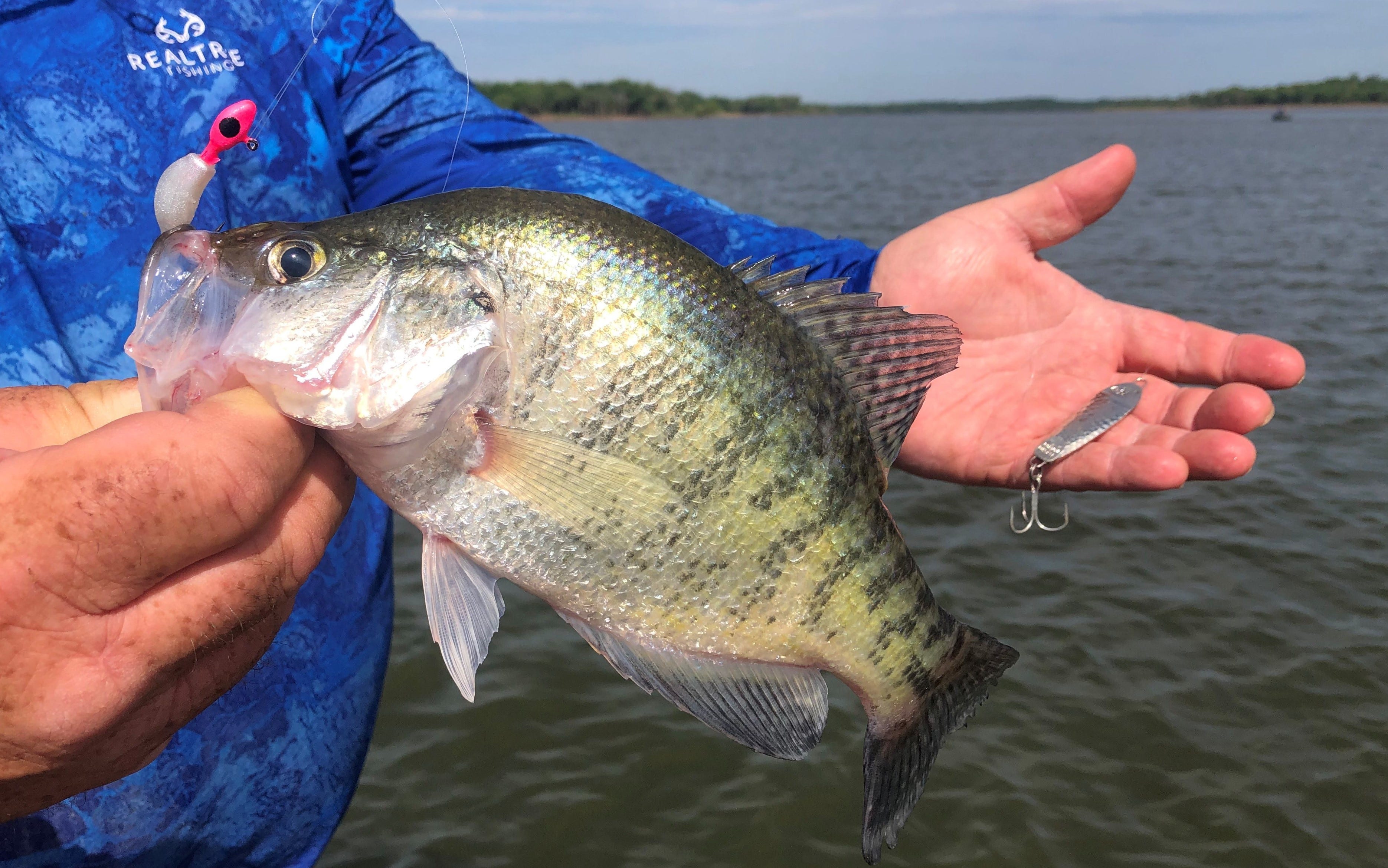

The late Ivan Martin was a legendary fishing guide who fished from Mexico to New York with his clients. While most of his trips were for bass, he had a passion for crappie. This particular technique came from him while on Lake Fork, Texas. It was November, and the crappie (along seemingly with everything else) were deep on main lake points in 25 to 40 feet.
Martin liked fishing a 3/4-ounce CC Spoon at the bottom of his 10-pound test line, and had a Bobby Garland Baby Shad tied on a loop knot about 24 inches above. He’d vertically jig the spoon on the bottom, which danced the crappie lure, too. Many times, a white bass or catfish would come on the spoon, while a crappie would come on the Baby Shad. It wasn’t uncommon to catch a crappie on both.
On the trip, three 10-pound-plus bass were caught on the Baby Shad doing this.
Crankbait
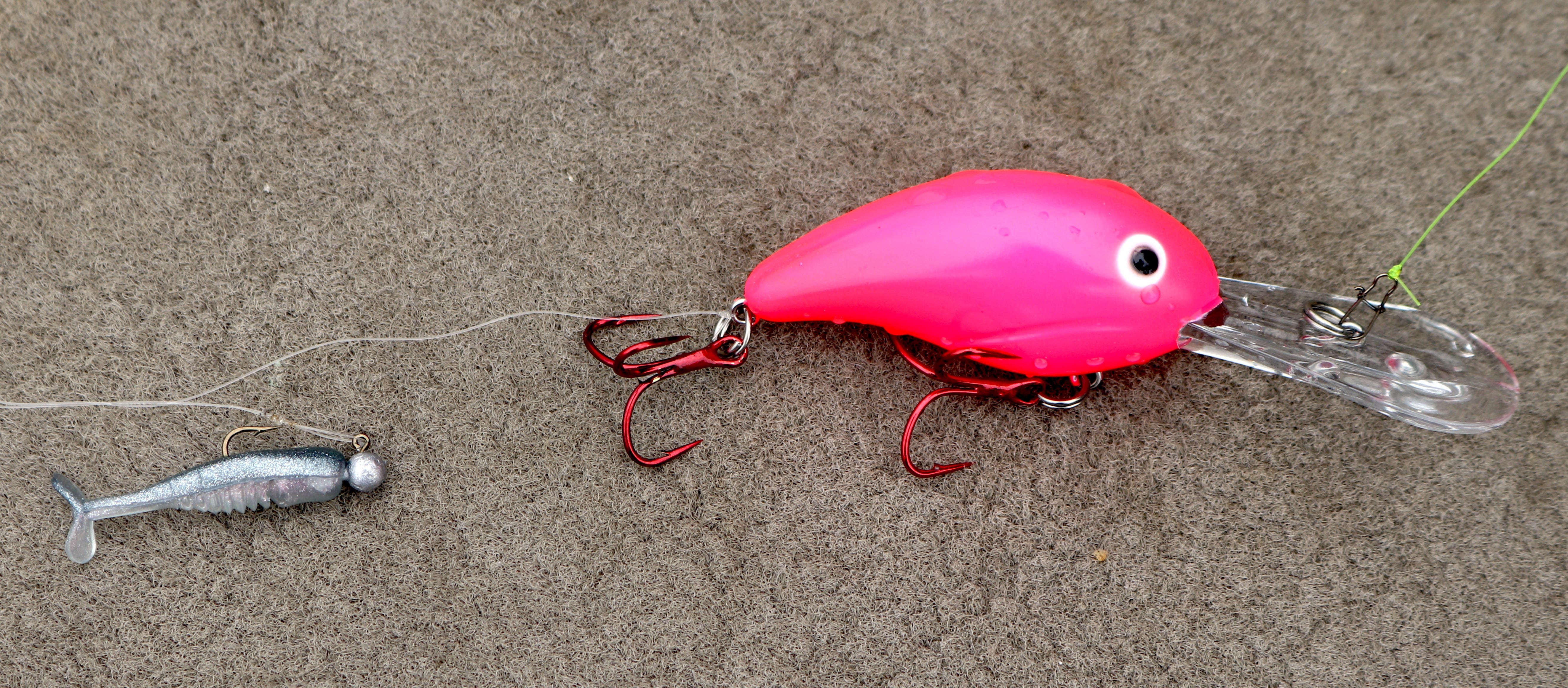

True, a crankbait is not a weight. However, a “lipped” crankbaits achieve a predictable depth that can be managed with speed and line length. Beaver Lake, Arkansas, crappie guide Greg Robinson depends on the technique this time of year and says it will work in almost any good crappie lake. Here’s what he says to do, in the most basic sense of the approach, using a Bandit 300 crankbait both for depth control of your crappie jig and to catch crappie, too.
“Bandits come in lots of colors, so pick one appropriate for your waters. To the crankbait’s rear hook hanger, tie an 18-inch length of 6-pound test line. To the end of the leader, tie a Bobby Garland 1/48-ounce Itty Bits Jighead rigged with an Itty Bit Slab Hunt’R in Monkey Milk. The combination puts the crankbait first, and pulls the little soft plastic behind as a trailer.
“Using your trolling motor, pull the tandem rig at a GPS speed of 1.2 to 1.8 MPH, focusing on river channels and creek channels with shad. You’ll catch crappie on both baits, and probably about equally.
“It’s a fun way to fish with the family and a pleasant way to keep a breeze moving on a hot summer day,” Robinson said.
The Classic Jighead
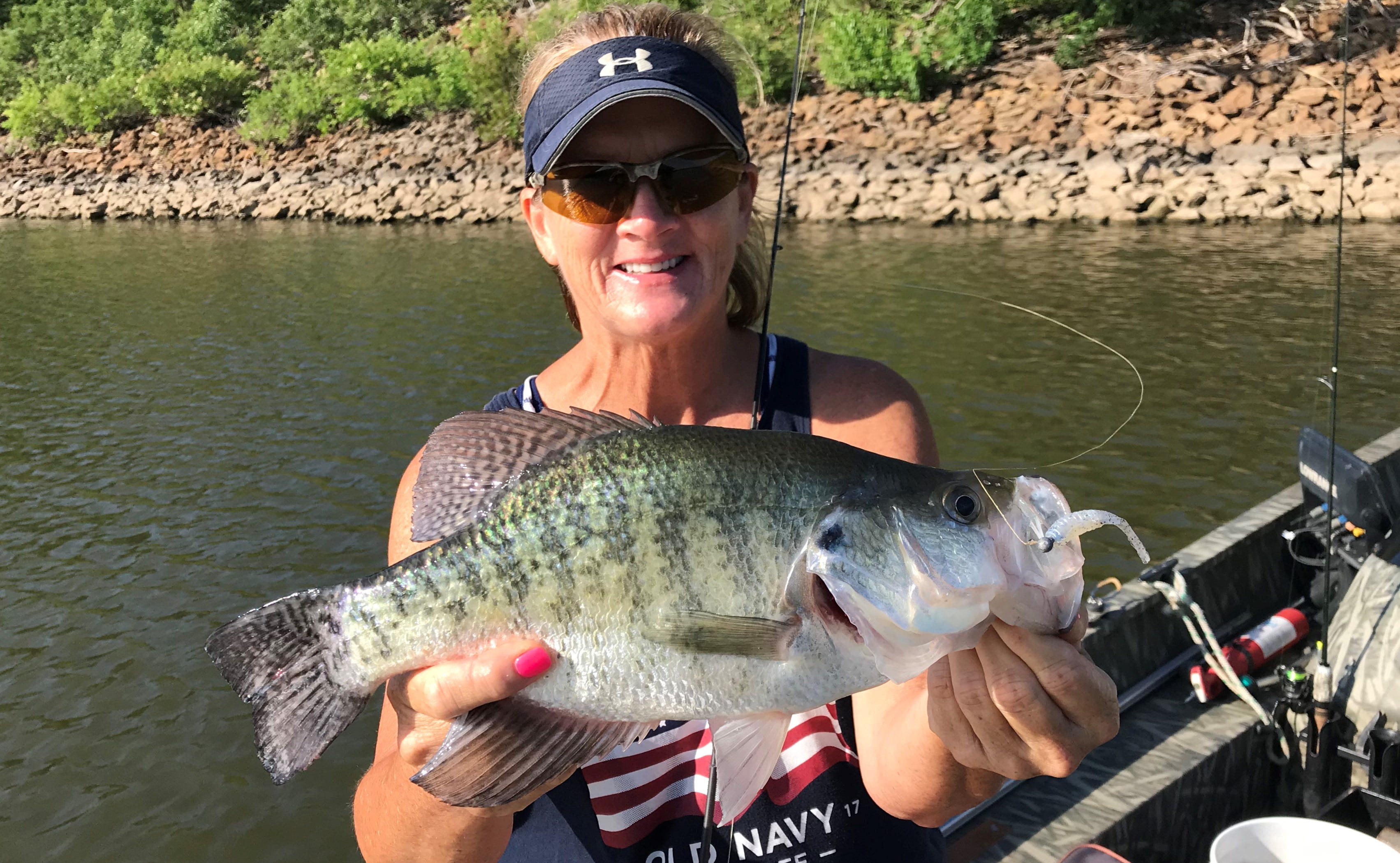

Finally, returning to where we begin, it would be remiss to not talk a bit about a classic crappie jighead for delivering various crappie baits. Jigheads have a weighted material that does the yeoman’s work of getting the bait down and a hook that seals the deal.
Jighead “weights” run the gamut. Most jigs used for crappie fishing are in the 1/32- to 3/16-ounce range, with 1/16 ounce being the most popular.
Bobby Garland makes 1/48- and 1/64-ounce jigheads that match up perfectly to the brand’s 1.25” crappie baits: Itty Bit Swim’R, Itty Bit Slab Slay’R and Itty Bit Slab Hunt’R.
Crappie Pro is a full-line jighead brand of multiple sizes and styles, including one series made especially for dock shooting, the Head Dockt’R. In dock shooting, it’s the lure, not the jighead, that is the more important “weight” factor. In this case, the jighead’s role is to hold the hook and present the lure.



